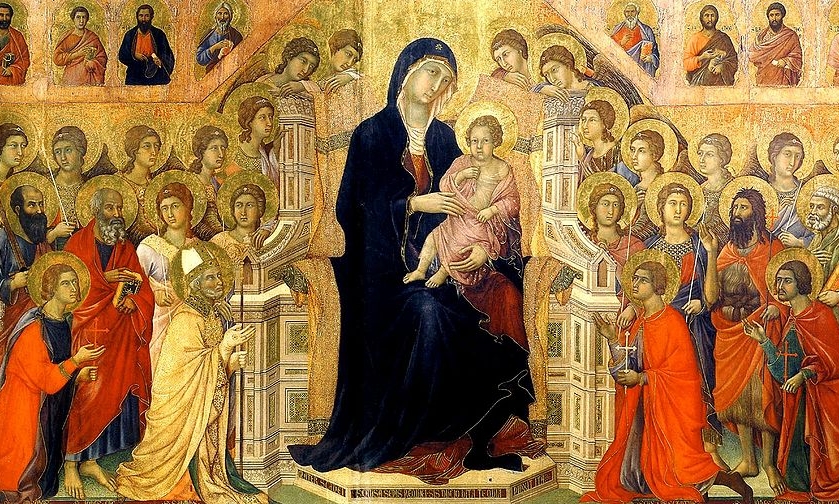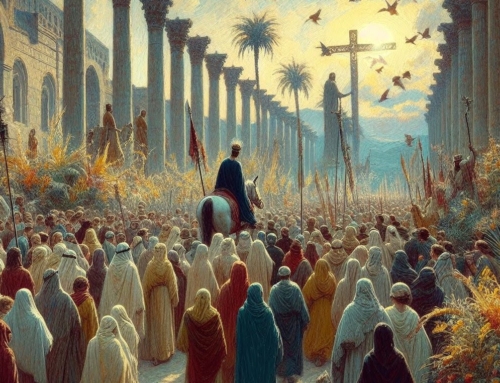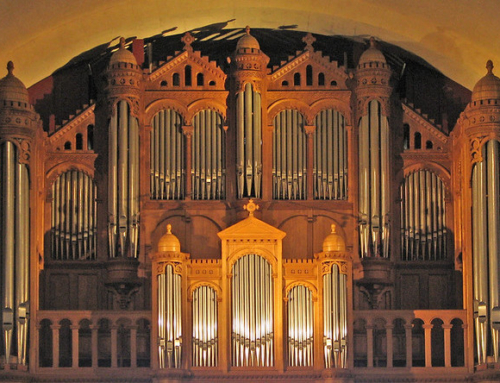Again and again in the Mass, we hear the phrase, “The Lord be with you!” The priest begins the Mass, “The Lord be with you.” He invites us to lift up our hearts, “The Lord be with you.” He starts the dismissal, “The Lord be with you.” We hear this expression so often at Mass that it almost sounds like a stock phrase and we forget that it means something.
Yet the liturgy’s signs and symbols are “specified by the events of the Old Covenant and fully revealed in the person and work of Christ” (CCC 1145). Such is the case with the expression: “The Lord be with you.” We find its biblical roots as a blessing for success, such as when Boaz greets his harvesters: “The Lord be with you!” (Ruth 2:4). King David too utters this as a prayer for his son Solomon while instructing him to build the temple: “Set to work, therefore, and the Lord be with you!” (1 Chr 22:16).
These usages culminate in another biblical scene: the Annunciation. Here, Gabriel announces to Mary, “The Lord is with you” (Luke 1:28). Unlike the previous statements, this announcement is one of fact; it points to the current reality, rather than expressing a prayer or wish. Indicative statements like Gabriel’s greeting aren’t lacking in the Old Testament, as, for example, when an angel meets Gideon and offers encouragement (Judg 6:12) or when the prophet Nathan shows approval for David’s desire to build a temple for the Lord (2 Sam 7:3). Even so, Gabriel’s announcement is fundamentally different from anything that came before it: so much so that St. Thomas calls it “a new and unusual greeting” (ST III, q. 30, a. 4). What is heralded is the Incarnation itself: God the Son, begotten before all ages in the bosom of the Father, now begotten as Son of Man in the womb of the virgin.
All these biblical expressions flow seamlessly into the liturgy’s “The Lord be with you.” The priest greets the congregation with the greeting of Boaz and blesses them with David’s blessing for Solomon. Yet the Annunciation changes everything. We are to hear the expression “The Lord be with you” not only as a greeting or a blessing for success in carrying out the Lord’s work. Rather, in the liturgy we relive the encounter between the Word of God and Mary, the Mother of the Word.
“The Lord be with you” thus becomes for us another annunciation of the Incarnation, another sacred encounter, where the Lord Jesus becomes present to us in the liturgy. This annunciation occurs at the beginning of the Mass as the introductory rites prepare us for the Liturgy of the Word, where “God himself speaks to his people, and Christ, present in his word, proclaims the Gospel” (GIRM 29). The same annunciation likewise begins the Liturgy of the Eucharist, where the Lord Jesus becomes sacramentally present in the Eucharist. The same annunciation also accompanies the post-communion prayer, which meditates on the Eucharistic presence just received and looks in hope towards the fulfillment of the sacramental mysteries—the beatific vision. It is to this fullness, partaken of now by the Virgin Mary and the saints, where we shall no longer see the Lord in sign and symbol, but “shall him as he is” (1 John 3:2).
✠
Image: Central panel of the Maestà, by Duccio di Buoninsegna (Wikimedia Commons)







